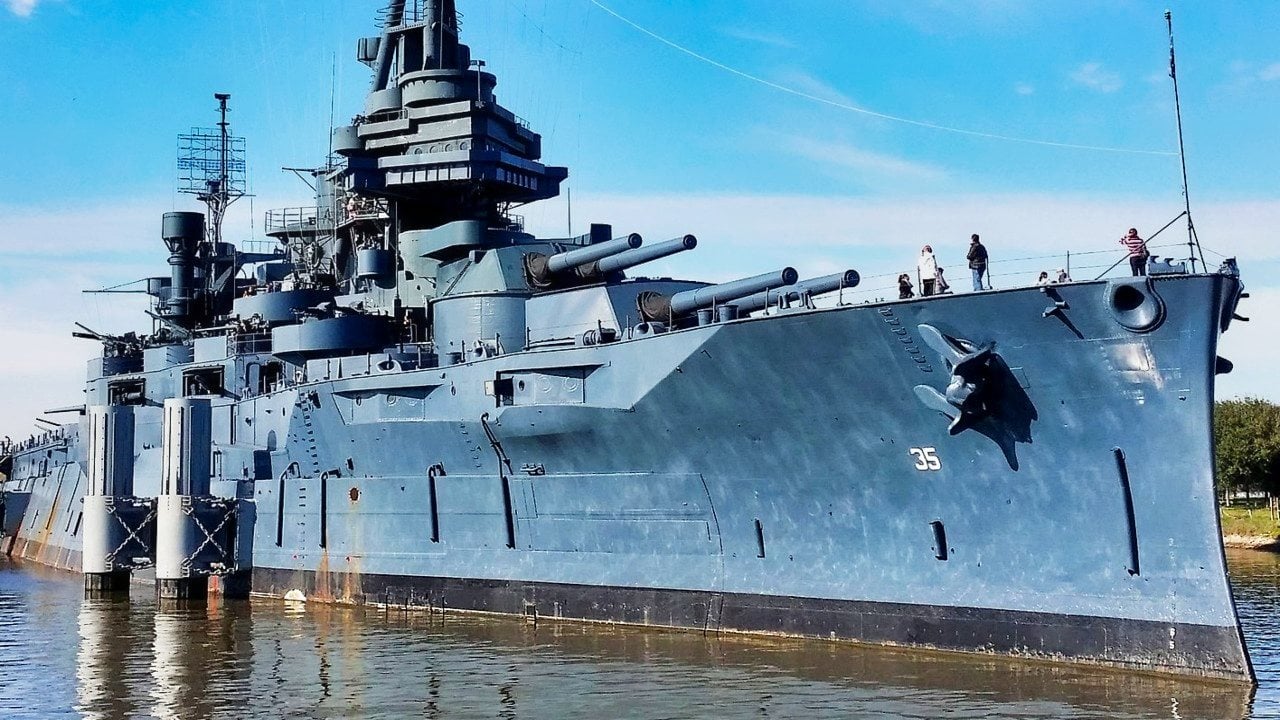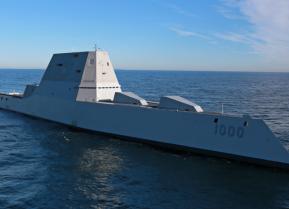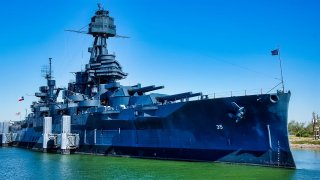USS Texas: How a 100 Year Old Battleship Is Making a Comeback
The battleship USS Texas will remain in drydock for restoration until early 2024 – at least. Then, a decision will need to be made: where to dock the Texas permanently.
The battleship USS Texas was first launched in May 1912, one month after the sinking of the RMS Titanic. The Texas still survives today, making her the only battleship to have served in both World War One and World War Two that still exists.
And with a refurbishment underway, the USS Texas battleship is expected to endure as a museum piece and a testament to a long-gone era in naval warfare.
USS Texas: One hundred ten years ago…
In 1914, the Texas was at the New York Navy Yard, undergoing the installation of fire-control equipment, when Mexican federal troops detained an American gunboat crew at Tampico. President Woodrow Wilson ordered ships from the Atlantic Fleet, not including the Texas, to intervene at Tampico. The incident, which came to be known as the “Tampico Incident,” was resolved peacefully.
However, President Wilson felt that retaliation would be appropriate; Wilson ordered Rear Admiral Frank Friday Fletcher to land a force at Veracruz and seize the city’s customs house. The Texas was deployed to assist – without the benefit of a traditional “shakedown cruise.” Instead, the Texas would be tried under fire, joining Admiral Friday’s forces in the waters off Veracruz. The Texas provided support as US forces landed as Veracruz, although the Texas never fired her weapons.
In 1917, the US entered World War One. The Texas departed New York in January 2018 and sailed for the Orkney Islands off the coast of Scotland where she joined Battleship Division 9, aka the 6th Battle Squadron of Britain’s Grand Fleet.
Texas’s World War One service was limited, consisting strictly of convoy missions and blockade duty. On only one occasion did Texas fire her guns in anger, at a suspected submarine (although the presence of a submarine was never confirmed.
After the Armistice ended World War One, Texas sailed home. In 1919, Texas became the first American battleship to launch an aircraft; Lieutenant Commander Edward O. McDonnell flew a Sopwith Camel off the Texas while she was in Guantanamo Bay, Cuba.
In 1924, the USS Texas underwent an extensive modernization overhaul, during which her cage masts were replaced with tripod masts, her 14 Babcock & Wilcox coal-fired boilers were replaced with 6 Bureau Express oil-fired boilers, and she added anti-torpedo bulges. The upgrades would help extend the Texas’s service life, allowing her to contribute when world war broke out again.
World War II and Battleship USS Texas
The Texas was in Maine when the Japanese attacked Pearl Harbor, avoiding the fate of Pacific Fleet ships like the USS Arizona. The Texas was mobilized for Operation Torch, the US’s invasion of North Africa. The Texas was assigned Port Lyautey in French Morocco for the initial phase of the invasion. During the invasion, the Texas participated in a restrained manner, firing just 273 rounds of 13-inch shells and six rounds of 5-inch shells.

The Texas was called upon once more, to assist as a convoy escort during Operation Overlord. On D-Day, the Texas, alongside British cruiser Glasgow, were positioned 12,000 yards offshore in the Omaha Western fire support lane. To support Allied troops landing in Normandy, the Texas fired 255 14-inch shells during the initial bombardment.
After the war, in 1948, the Texas was decommissioned – after more than three decades of service.
Preserved for Posterity
After World War II, “the Texas, like most battleships, was retired, destined for the scrap yard or target practice,” Texas Monthly reported. “But a pair of Texas congressmen, Lyndon B. Johnson and Albert Thomas, asked the secretary of the Navy if the state could turn it into a memorial.” Not long after, “the Texas became the country’s first permanent floating museum. Visitors could tour the turrets, walk the deck, and eye the brig.”
In the 1980s, the Texas Parks and Wildlife Department took over the Texas and ran a fundraising campaign to raise the funds needed for leak repairs. “Remember the Texas,” was one fundraising slogan. “She fought for you. Now let’s fight for her.” Over $2 million were raised and the old battleship was repaired.
The leaks continued, however, as the hull continued to deteriorate. “In 2017 a hole fifteen feet below the waterline caused the ship to list six degrees,” Texas Monthly reported. “It was clear that the Texas needed to be moved to dry dock for serious overhaul.” And in August 2022, four tugboats guided the Texas to Galveston, where she was hoisted into dry dock.
The battleship USS Texas will remain in drydock until early 2024 – at least. Then, a decision will need to be made: where to dock the Texas permanently. Ideally, the Texas will be placed somewhere “along the coast with heavier tourist traffic, like Galveston.”
Wherever the Texas ends up, it will serve as the last example of an American pre-World War One battleship.
About the Author
Harrison Kass is a defense and national security writer with over 1,000 total pieces on issues involving global affairs. An attorney, pilot, guitarist, and minor pro hockey player, Harrison joined the US Air Force as a Pilot Trainee but was medically discharged. Harrison holds a BA from Lake Forest College, a JD from the University of Oregon, and an MA from New York University. Harrison listens to Dokken.


